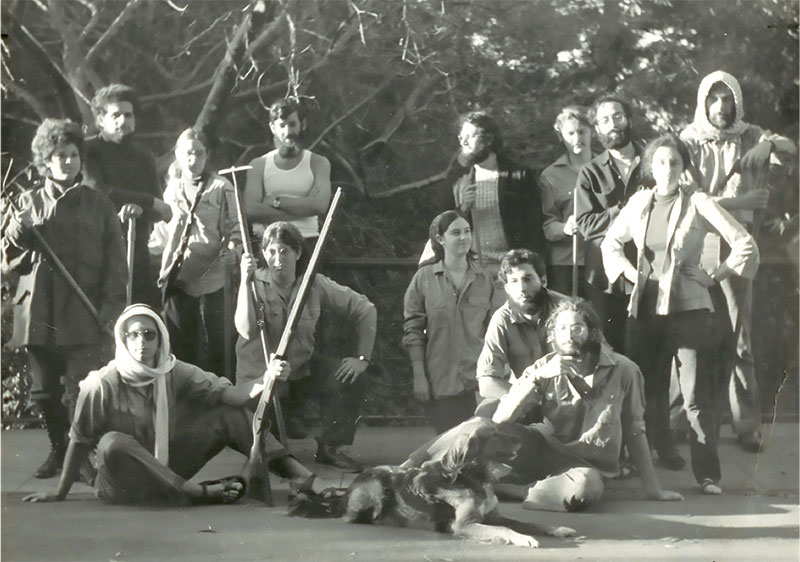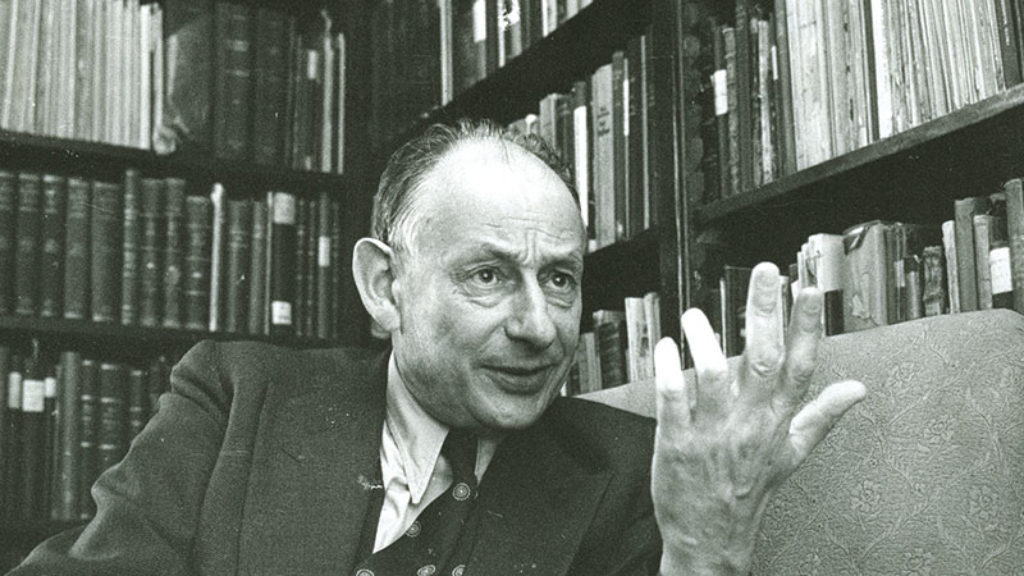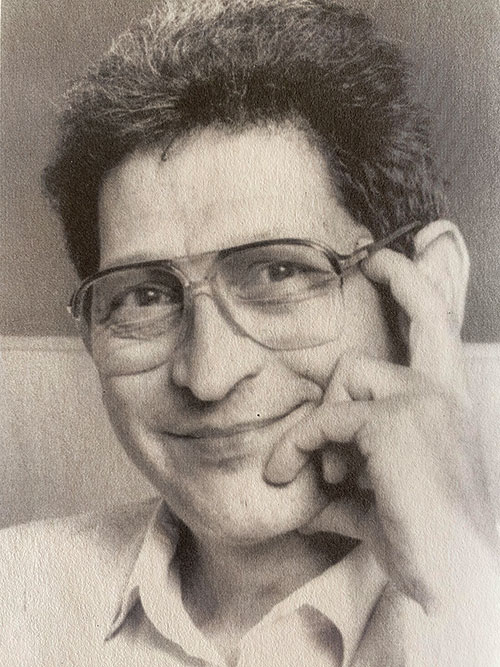My Path in Jewish Studies: Memoirs of a Counter-Historian
In 1980, I interviewed Gershom Scholem in his hotel in New York for the New York Review of Books, not long after I had published my first book about him. After the formal interview, which focused primarily on the messianism of Gush Emunim and its implications for Israel and Zionism, we discussed other topics in Jewish studies. Scholem had famously railed against the likely apocryphal saying of the nineteenth-century Wissenschaft des Judentums bibliographer Moritz Steinschneider that all that remained for scholars of Jewish studies was “to give Judaism a decent burial.” His task had been the opposite: to breathe new life into what he thought of as a moribund field, to move beyond or below dry bibliographic studies of rabbis and rationalists to reveal “the invisible stream of Jewish mysticism.”
Although we had spoken in depth both before and after I had written my book about him, I was still very much the student and Scholem the great man. So I asked the old sage of Jerusalem: “Now that you’ve invented the study of the Kabbalah, what new fields in Jewish studies remain to be invented?” Without missing a beat, he answered: “The history of Jewish criminals.” Full of youthful ambition and hubris, I responded: “That’s very interesting, but I’ve decided to investigate the history of Jewish gender and sexuality.” “That’s not a field,” Scholem declared. And that’s when I knew that I was on to something.
I was chafing to do something new, to follow the lead of historians like Paula Hyman (of blessed memory) and Marion Kaplan. We were all influenced by the new interest in popular culture and the history of intimate relations that were slowly percolating through history departments. Among the very few who had predated us in this subject was Jacob Katz, whose 1945 Hebrew article on “Marriage and Marital Relations at the End of the Middle Ages” also made a profound impression on me. But, with the exception of Katz, the older generation, like Scholem, was often not amused. My own teacher, the great historian Amos Funkenstein, had trained us in the Germanic tradition of Geistesgeschichte, tracing ideas from their origins as exercises in intellectual history. For the first time since I started studying with him at UCLA in 1973, he was visibly angry. Sitting at a café, he told me that I would be throwing away my talents on trivialities. He came around in the end, but it was an intellectual rebellion against my Doktorvater that took some fortitude to maintain.
My academic peers and I who are now retired or retiring came of age in the 1960s and 1970s. We were children of postwar American Jewish life and had experienced relatively little antisemitism. The elite universities were open to us, and we entered them without any feelings of inferiority.
It was a post-assimilationist moment. We believed, with others of our generation, however falsely, that revolution was in the air, and we wanted to partake in it as Jews. We rejected the vapid assimilationism of the older generation of American Jews, the one-dimensional reduction of Judaism to synagogue pieties, the richness and contradictions of the tradition to banal cliches. We had a sense that the whole of the Jewish tradition was much more intellectually and spiritually exciting than what we had imbibed in stultifying Sunday school classes. We wanted to create something new and not merely continue. As the historian Hillel Levine memorably said, quoting the rabbis: we wanted to be bonim (builders) and not banim (children).

In 1970, I joined a Jewish student group in Berkeley that styled itself as the “Radical Jewish Union.” We scorned the semimoribund Hillel House and forged our own alternative community, arguing over Zionism and American Judaism, teaching ourselves Hebrew, studying Jewish texts, and celebrating holidays together in a rather anarchic spirit. We even published a newspaper (Jewish Radical), in which I previewed my senior honors thesis on the Nietzschean Hebrew writer Micha Yosef Berdichevsky in an article.
We were mostly socialist Zionists, and many of us planned to live on kibbutz (almost none ended up there, although a fair number did stay in Israel). In our newspaper, we defended Zionism as “the national liberation movement of the Jewish people” against the anti-Zionist New Left, but we also were among the first to criticize the relatively new occupation of the territories (as Scholem would later in my interview with him). Looking back, I now realize that my two years in this group in some ways replicated my father’s own intense Jewish political and cultural experience in the HaShomer HaTza’ir youth movement in interwar Poland—though in a very American key.
The Six-Day War had undoubtedly energized us in our identity as Jews. Our generation was the first to come of age when Jewish sovereignty was a bedrock reality. We turned to Israel as a countercultural alternative to America, volunteering on kibbutz, traveling the length and breadth of the country, learning Hebrew, and finding inspiration in a living Jewish culture. But within a few years, the 1967 victory seemed increasingly Pyrrhic, substituting occupation for Jewish national liberation. As Zionism hardened into the realities of a state, the utopian project of renewal looked less and less promising. The iron grip of the Orthodox on the definition of Judaism seemed increasingly paralyzing. To be Jewish in America often seemed to allow for greater experimentation than it did in Israel.
The American Jewish counterculture seemed to resonate with the counterculture of the Weimar Jews. Many of them had also been drawn to Zionism but, like us, more as a project of utopian renewal of Judaism than as political ideology. Scholem and his contemporaries—Martin Buber, Franz Rosenzweig, Leo Strauss, and Hannah Arendt—were also trying to think their way back into the Jewish tradition without necessarily embracing Orthodoxy. Scholem once described Judaism as a “demonic giant” that the bourgeois assimilationists of his parents’ generation had domesticated. He and his contemporaries sought to recapture, or at least understand, that demonic giant. Their questions became ours, which may explain why we turned again and again to their writings in the late 1960s and 1970s. Our Jewish renaissance was built in no small measure on their renaissance a half century earlier.
And, so it was, that when I decided to make the field of Jewish studies my career, I found myself attracted to those Weimar thinkers and especially to Gershom Scholem. The question that I posed for myself at the start of my career was: how does a secular historian understand a religious tradition? I wanted to embrace the whole of the Jewish library without embracing halakhic practice. Scholem had his own metaphysics in which God was a kind of vanishing point of origin from which the whole tradition unfolds, but he himself remained secular even as he revealed the wealth of the esoteric mystical tradition. This was a great inspiration as I tried to resolve my own existential dilemmas by studying what was, for me, an alien tradition.
I discovered in Scholem a method that I called “counter-history”—that is, the way subterranean and even despised traditions are essential to the vitality of a canonical history. In a memorable verse from Psalms that Scholem liked to quote, we read, “The stones the builders scorned will become the cornerstone” (Ps. 118:22), and I have tried to uncover such counter-historical foundation stones in my work.
My training with Amos Funkenstein introduced me to the whole range of the Jewish tradition, and he gave us, his students, the chutzpah to try to master all three thousand years of it. It was an experience like none other. I had come to study modern Jewish history with him, but his seminars focused primarily on medieval thinkers. So I found myself in the first semester trying to master the biblical exegesis and philosophy of Abraham ibn Ezra. Later, it was Maimonides and Aquinas. Unhappy at home, Amos (as he insisted we call him) could be found in his little office in Bunche Hall day or night. If you wandered by, he would grab you and say: “Let’s study a text.” It might be the Habakkuk Commentary from the Dead Sea Scrolls or a teaching of Nachman of Bratslav.
Amos taught us that it is better to be bold and wrong than boring and right, which, among other things, sowed the seeds of my own rebellion against him. It also meant that I have never really been a specialist who delved deeply into only one topic or period of history. Although I did not have Amos’s incomparable erudition, I wanted, insofar as possible, to understand the whole of Judaism, rather than just one of its parts.
My approach, as I have come to understand it, is constructive. I begin with a frankly contemporary question about, say, sex or political power, then try to reconstruct the past to answer that question. This isn’t “presentism” (the bane of all historians but, sadly, more and more in vogue in recent scholarship), which uses the past for contemporary purposes, often political. For my method, the present dictates the questions but not the answers. Constructive historians must be faithful to their sources, even as they ask questions that might never have occurred to those sources’ authors or earlier historians. The historical sources are at once familiar and alien, and if, to quote a favorite quip of Scholem’s, “Nothing Jewish is alien to me,” it is their very alienness that arouses the deepest affinity.
All of my work has started with a modern, secular question and then went backward, counter-chronologically into the deeper and deeper religious past. To do justice to “modern” questions requires extensive treatment of the tradition as a whole, from its very points of origin. Every attempt to discover the point of transition between “tradition” and “modernity” demands a search further back in history.
My book, Eros and the Jews—the project Scholem dismissed and Funkenstein forbade—is a good illustration of what I mean. In addition to the work of historians like Paula Hyman and Jacob Katz, I was inspired by a casual question a colleague asked me in the late 1970s. Where did Bashevis Singer’s impish depictions of sex come from? Were they his own modernist inventions, or was he somehow riffing on the earlier Jewish tradition? And what of Philip Roth’s wholesale attack in Portnoy’s Complaint on Judaism as a sexually repressed tradition? These questions led me to study the works of the maskilim, the early figures of the Jewish Enlightenment, since Singer often depicted his characters as latter-day maskilim, endlessly reading Spinoza and so forth. In reading Haskalah literature, I discovered that many of the issues around sexuality could be found in the memoir literature of the late-eighteenth and nineteenth century.
But then a new question arose: the maskilim often wrote against Hasidism, so was there something in Hasidism that repressed sexuality? So back I went to the eighteenth century and discovered what I called the “displacement of Eros in early Hasidism.” But then another question arose: were the Hasidism inventing this tradition or simply continuing earlier asceticism in Ashkenazi culture? The answer, of course, turned out to be complicated. There was a strong strain of asceticism in the earlier kabbalistic and philosophical traditions. The problem for the kabbalists in particular was one’s thought during the sexual act, not anything in the act itself (this bothered contemporary Christian thinkers too). I was also surprised to discover—against Jacob Katz’s thesis—that love and sexuality were very present in the popular culture of the Central and Eastern European Jews, going back to the High Middle Ages. The sources that showed this were less those of the intellectual elite and more the She’elot u-Teshuvot, the responsa literature in which the often deeply personal questions asked of the rabbis sometimes tell us more about popular culture than the legal answers they gave.
So, from there, back to the Talmud and its much more ambivalent and complex attitude toward sexuality. For the rabbis, conversant it seems with Stoic philosophy, the issue was control of the passions (the yetzer hara, or evil inclination, in their terminology). The physical act of sex posed no problem because, unlike the philosophy of late antiquity and early Christianity, they did not bifurcate body and soul. Finally, of course, there was no way to avoid also considering the Bible itself, in which I discovered an entirely different sexual discourse—focused on fertility and the suspension of legal norms to achieve it.
It took a full twelve years on this ever-backward path to complete Eros and the Jews. Of course, given my constructive approach, I also had chapters on “Sexual Stereotypes in American Jewish Culture” and “Zionism as an Erotic Revolution,” both of which revealed much of the ambivalence and ambiguity that I had discovered in earlier epochs. Traditional Judaism neither represses sexuality nor unproblematically endorses it. Each era of history has its own approach, not coincidentally in dialogue with the surrounding majority culture.
My work was often the product of the encounter with the State of Israel, just as the American Jewish renaissance of the 1970s was in part inspired by Israel. Today, it is hard to recapture the abyss that separated those of us entering the field in the 1970s from its practitioners in Israel. It was de rigueur for us to spend at least a year working in Israel as part of our training. While there, we mostly felt a sense of inferiority: no matter how fluent we were in Hebrew or proficient in reading the primary sources, the Israelis always seemed to have a leg up on us. And the expectations in Israeli Jewish studies were for a kind of old-fashioned European hyperspecialization, or even antiquarianism. The radical questions of Berkeley and Weimar seemed very distant from the National Library’s Jewish Studies Reading Room.
Yet Israel is in many ways my second home (it was the first home of my wife, Rachel, and we still have many friends and family there). In 1983, I was offered a position at Haifa University. One reason I didn’t accept was because I felt that I would not be able to answer the big questions of Jewish history there. The genealogical constructive approach I have taken in my work seemed to be too alien to Israeli academic culture. However, it is perhaps a sign of convergence in the field that I probably have as many readers in Israel now as anywhere, a welcome development I never would have anticipated fifty years ago.
Israel no longer plays the same role in Jewish studies that it did when we entered the field. Of course, there are outstanding scholars there doing outstanding work. But they have fewer and fewer students, and, because they are often required to publish in English, they are, if anything, more in need of our approval than we are of theirs. Non-Israeli students entering the field today, of course, still frequent the Reading Room, but the center of gravity has shifted.
My father’s secular Zionism, much of which I inherited, now appears like a naive and utopian belief, especially now as Israel becomes increasingly illiberal and polarized. But I am still unwilling to relinquish the shards of that belief. Unlike Scholem, my course did not bring me ultimately to Zion but rather to a very different life in a diaspora he could never have imagined in the early-twentieth century. But his biography, which is the last book I have written, continues to speak to me as well. I feel that I have closed a circle.
And what remains of the countercultural spirit with which my peers and I entered the field a half century ago? A secure future in Jewish studies was hardly assured in the 1970s, yet the field exploded with new positions in virtually every major university and college. We were the generation that took Jewish studies out from a handful of seminaries and universities of the earlier generation into every corner of North America. But the paradox of our careers is that our meteoric success owed a great deal to the American Jewish establishment—and especially its wealthy donors, whose culture we scorned. We started out rebelling but ended up sitting in comfortable endowed chairs. Have we followed Scholem in reviving the dead, or have we instead piled up more books in the library?
I still live in the hope that my work, like Scholem’s, has made a contribution to the renaissance of modern Jewish life that started in Weimar Germany and continued in its own way in 1970s America and beyond. Over the years, I have tried to integrate the various sides of my own life: as a historian, a secular Jew, and an American born in the middle of the twentieth century. I find myself at times in a lonely position, as a secular Jew at home in both Israel and the United States but also at home in neither. I remain caught between the State of Israel and the diaspora, between Jewish and American identity, and between religion and secularism. These are the dialectics that have defined my life, and continue to do so, both as a scholar and as a Jew.
Suggested Reading

The Secret Metaphysician
While a new crop of biographies about Gershom Scholem all, in one way or another, seek to account for the great man's fascination, they are themselves evidence of Scholem’s ongoing allure.
Looking Backward and Forward
Response #2: David Biale revisits his provocative 1998 essay on Jewish assimilation.
Remembering the Scholems
New books about Gershom Scholem and his brother Werner evoke memories of 28 Abarbanel Street in Jerusalem.

Walking with Walter Benjamin
On losing one’s self in Walter Benjamin’s final wanderings.

Comments
You must log in to comment Log In